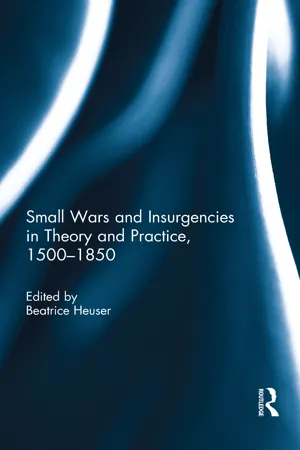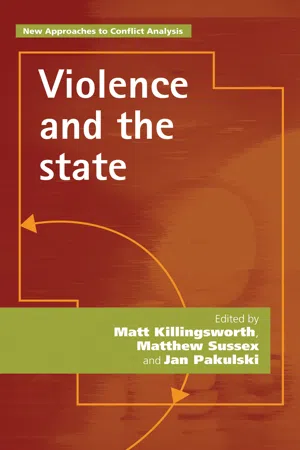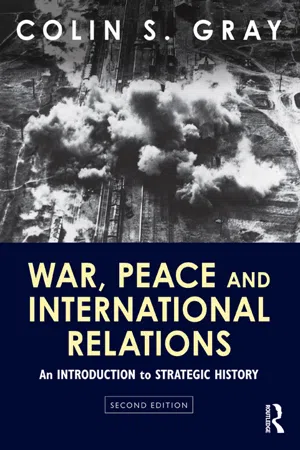History
War in the Vendee
The War in the Vendée was a counter-revolutionary uprising that took place in the Vendée region of France during the French Revolution. It was characterized by fierce resistance to the revolutionary government and resulted in a brutal conflict between the republican forces and the Vendéen royalist insurgents. The war had a significant impact on the course of the French Revolution and led to widespread devastation in the region.
Written by Perlego with AI-assistance
Related key terms
Related key terms
1 of 4
Related key terms
1 of 3
3 Key excerpts on "War in the Vendee"
- Beatrice Heuser(Author)
- 2017(Publication Date)
- Routledge(Publisher)
The insurgency of the Vendée Alan Forrest Department of History, University of York, UKThe insurrection in the Vendée combined open warfare with the methods of petite guerre, ambushing French republican soldiers and cutting their supply lines to Paris. These tactics, when combined with the hatreds generated by a civil war, go far to explain to the cruelty of the conflict in the west and the depth of the hatreds it engendered. In republican eyes the use of guerrilla tactics was unjust and illegitimate, and they denounced their adversaries as common criminals and brigands, portraying them as backward, superstitious, even as subhuman, and in the process justified the savage repression they unleashed against them.The civil war in the Vendée has become a critical part of the memory of the West of France and is a powerful element in its identity: a region that has willingly assumed the mantle of a martyred province after one of the most savage campaigns of the Eighteenth Century. The war is remembered in the West as one of principle; a bitter struggle between peasants and Catholics on one side, republicans and atheists on the other. It was a war for God, fought with all the intensity of a religious crusade. In purely military terms, it was a mixture of different types of warfare, ranging from ambushes and isolated attacks on republican columns, to open battles when circumstances allowed, an insurgency that profited from familiarity with the terrain and recruitment based on feudal obligation to local barons, a system that provided the Grande Armée Royale with some 40,000 men, and Charette with a further 5,000 recruits in 1793, numbers far beyond the capacity of the Republic. If it had a disadvantage it lay in the indispensability of individual commanders and the constant likelihood of internal bickering and petty jealousies amongst them.1- eBook - ePub
- Matt Killingsworth, Matthew Sussex, Jan Pakulski(Authors)
- 2015(Publication Date)
- Manchester University Press(Publisher)
12 These were not the traditional wars of European kings, it is argued, with limited royal armies and limited objectives, but rather wars fought by rival political and social systems, between popular sovereignty and royal absolutism, between the values of the Declaration of the Rights of Man and Citizen and the feudal Society of Orders. What was at stake for the French was the very existence of the Revolution and the Republic itself. War was a means to both defend the Revolution from internal and external threats, and to export revolutionary principles and reforms throughout Europe. The converse was European powers fighting for the restoration of the Bourbons and the Old Regime to France, and defending themselves against the contagion of revolution.Since the 1980s, this interpretation has come under increasing scrutiny. In his study of eighteenth- and nineteenth-century European international relations, Paul Schroeder argues that the French Revolutionary-Napoleonic Wars were not a ‘contest between the French Revolution and the old regime’ but rather a ‘conflict between three hegemonic powers [Britain, France and Russia] as to which or which combination of them would control and exploit the countries in between’.13 In his now classic analysis of the origins of the French Revolutionary Wars, Tim Blanning put the case for realpolitik prevailing over ideological considerations, with the wars driven largely by traditional rivalries and power interests.14 Blanning concedes that ideals certainly weighed more heavily with the French than with the Austrians, Prussians or British, but argues that the Girondin deputies ultimately pushed France to war in 1792 ‘chiefly for the purpose of obtaining political power’.15Notwithstanding the continuation of eighteenth-century state rivalries based on power and security, the case for ideological factors as playing a key causal role in the Revolutionary Wars is unquestionably strongest for the case of France, and specifically between the years 1792 and 1794. This was both the most radical and ideologically fervent era of the French Revolution, culminating in the Jacobin dictatorship and Terror (1793–94); and the period when France was most vulnerable to foreign invasion and military defeat. While the French court and other French revolutionary leaders pursued war for their own reasons, it was the Girondin deputies led by Brissot who were ultimately responsible for winning over the French National Assembly between late 1791 and April 1792. Notwithstanding political self-interest, ideology mattered in this debate, and not simply as an emotive rhetorical device to close out the argument for war. As Alan Forrest has remarked of the Jacobin language of war in this era: ‘there is no reason to doubt the reality of their underlying fear or the genuineness of their commitment to what they saw as a better society’.16 - eBook - ePub
War, Peace and International Relations
An introduction to strategic history
- Colin S. Gray(Author)
- 2013(Publication Date)
- Routledge(Publisher)
Throughout the nineteenth century, people looked back to the Great War with France, and to its dominant figure, Napoleon Bonaparte, for inspiration, for instruction, as a warning, and simply because it was the last general European – and hence, by extension, ‘world’ – conflict. Intellectually, notwithstanding the galloping material progress of the nineteenth century, the leading theories of war were, and remained, decidedly Napoleonic. Both Clausewitz and especially Jomini were inspired by Napoleon's behaviour as the exemplar of the war-maker. Clausewitz transcended his contemporary historical context and the often raw emotions occasioned by his varied personal experience. Jomini too was successful in that he set out to explain both how Napoleon triumphed as a general and how those triumphs could be attributed in good part to the Emperor's adherence to certain rules and enduring principles. It is scarcely surprising that Napoleon's reputation and methods, puffed vigorously and even rigorously by Jomini, should dominate military thought, and some of the military practice, for most of the century. After all, Napoleon fought no fewer than fifty-five battles between the time of his first independent command in 1796 and his nemesis at Waterloo in 1815. Of those, only eight (some people argue for just six) were not victories. By any standard, that is a remarkable military record. So formidable was revolutionary and then Napoleonic France that, it bears repeating, it took seven coalitions twenty-three years to bring it down.Here we should look back, briefly, to note the contrasts as well as the continuities with the warfare of the preceding century. The contexts of war are vitally important, although they cannot be all-important, because the mystery of combat performance is by no means entirely the product of contextual factors but also is driven in part by influences integral to warfare itself. In other words, ultimately soldiers need to perform in battle. Nevertheless, the political and socio-cultural contexts play a determinative role in defining the character of war in a particular period. It is a general truth that societies wage war according to their natures and for the kinds of political goals that express their views of the world.Dynastic Europe in the eighteenth century inhabited an ‘Age of Reason’, the era of the Enlightenment, when rationality and reform were intellectually fashionable. Such a Europe by and large waged its wars in what contemporaries regarded as a reasonable manner. At least, such was the broad intention. There were exceptions, but then there always are and always will be. It can be tempting – following Clausewitz, one must add – to exaggerate the limited character of eighteenth-century warfare. Some historians have suggested or implied that European wars in that period tended to take the form of an elaborate and sedately paced game of move and counter-move, with little effort expended to seek decisive victory. This is one of those frequent cases of an initially sound argument becoming unsound through exaggeration. The sound argument holds that after 1792 there was indeed often a transformation in the purposes for which wars were waged, and in the ways in which they were conducted. The unsound argument proceeds to present a substantially fictitious picture of eighteenth-century warfare. That warfare was exceedingly bloody, with battlefield death rates entirely compatible with Napoleonic practice. That point scarcely requires much explanation. Little imagination is needed to grasp the character of the sharp end of war in the eighteenth century, when well-drilled ranks of professional soldiers exchanged volleys from smooth-bore muskets at close or even point-blank range (from 200 down to 80 yards or so). Such warfare was no game to the soldiers who had to do it. However, provided one is alert to the errors of exaggeration, it is not difficult to present a fair characterization of the warfare of the era which highlights its differences from what was to follow in the 1790s and, for a while, thereafter.
Index pages curate the most relevant extracts from our library of academic textbooks. They’ve been created using an in-house natural language model (NLM), each adding context and meaning to key research topics.
Explore more topic indexes
Explore more topic indexes
1 of 6
Explore more topic indexes
1 of 4


